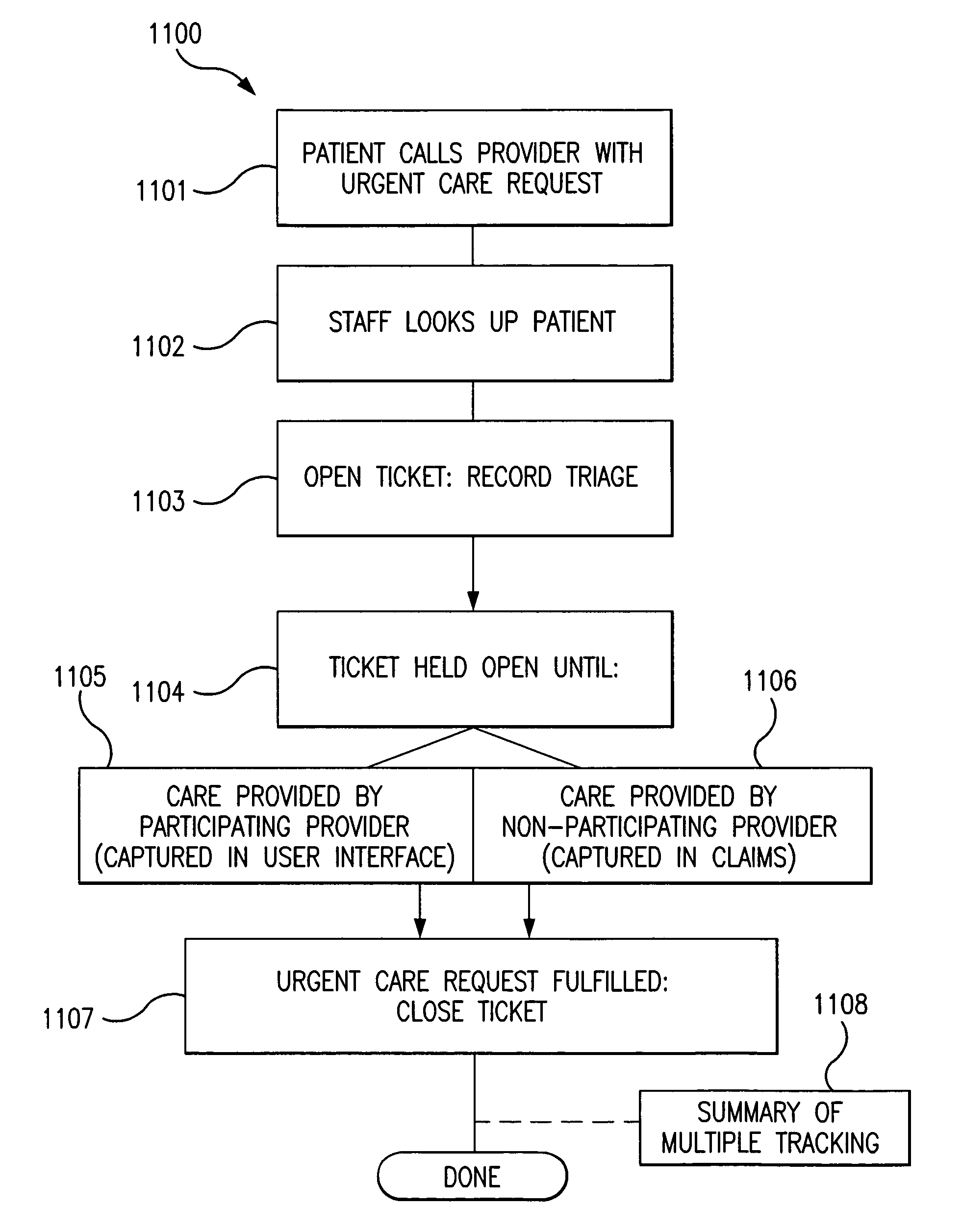In the year 2000 there were nearly 5 million potentially preventable admissions to US hospitals, resulting in $26.5 billion of excess costs.
PCPs are often not available for urgent care because they fill their day with pre-planned visits in order to maximize revenue.
Lack of primary care for urgent needs causes over-utilization and over-
crowding of the ER.
Over-
crowding in the ER causes decreased clinical quality.
PCPs lack the tools and incentives to improve this situation.
Meanwhile, health insurers have been reluctant to provide financial incentives to physicians to improve performance without independent proof of physician performance.
Over-utilization of the ER is largely the result of poor access to care for urgent care needs (care that is needed within 48 hours).
In particular, many Medicaid patients are unable or unwilling to use their local Federally qualified health center (FQHC) for urgent care due to access problems.
(1) Structural issues at FQHCs: limited office hours; insufficient PCP capacity resulting in long wait times and lead times; inefficient scheduling practices; inefficient
workflow within FQHCs.
(2) Patient-Provider Interactions: communication problems due to literacy and foreign languages; limited patient understanding as to the appropriate use of ERs and FQHCs for urgent care.
(3) Financial Issues: lack of financial incentives for either the FQHCs / PCPs or patients to change behavior.
(4) Externalities: factors outside the scope of delivery of
medical care, such as the lack of convenient local transportation.
Many avoidable hospital admissions are re-admissions which result from poor
discharge coordination between the hospital and the PCP; the lack of timely follow-up by PCPs; poor communications between the hospital and the patient; and lack of understanding by the patient.
Previous attempts to address the problem of over-use of ERs have had limited success.
This has not been an effective deterrent because there are few alternatives for urgent care.
Likewise, attempts to address the issue from the physician side have been hampered by the perverse incentives of the fee-for-service
payment system and by the inability to measure what, if anything, physicians are doing about improving “access” (other than through the use of annual questionnaires of questionable reliability).
However, it has proven difficult and expensive to implement for both PCPs and managed care organizations (MCOs), due to the comprehensiveness of the required capabilities, the cost of developing and providing those capabilities, and the many years required to generate a return on investment.
These issues are significant barriers to adoption of the PCMH model by PCPs and financial support for the PCMH by MCOs.
More generally, in the current U.S. healthcare
system there is little accountability for outcomes.
This has in turn inhibited efforts to reform the
payment system.
The fragmented nature of the health care
delivery system in the U.S. makes accurate measurement of a provider's performance very difficult.
None of the payers has an accurate view of the relationship between the claims, or of the patient's overall condition.
This prevents determining the outcome and quality of care from claim information.
This situation makes statistically valid measurement of provider performance difficult or impossible.
In addition, improvements in the payer's
workflow will have only a limited
impact on the delivery of a given provider's care.
Inaccurate P2P attribution by health plans for the purpose of determining and then tiering physicians based on clinical quality and efficiency—and subsequent public assertions of superior (or inferior) quality and the payment (or withholding) of financial incentives—is a major problem and the cause for numerous lawsuits by medical societies and state governments against health plans.
In addition to the particular problems with each methodology, all of these are retrospective; that is, they try to establish who will be responsible for care based on who theoretically was responsible for care—an often inaccurate assumption.
A claims-based P2P attribution methodology is unsatisfactory because the claims system was not designed to capture P2P information, is incapable of providing timely feedback to physicians, and is ignorant of both the physician's perspective on P2P attribution, and ignorant of the patient's wishes.
Furthermore, as P2P relationships are dynamic, P2P attribution methodologies must also be dynamic and able to adjust in real-time—something the claims system cannot accommodate due to the typical 30- to 90-day
processing delay.
Physicians in small and fragmented (i.e. un-affiliated) practices make up the majority of the healthcare
delivery system, but have lower quality scores and participate less frequently in quality improvement initiatives than do physicians in large integrated practices; this results in quality, safety, and cost problems relating to health care delivery by those small practices.
Previous attempts to engage small physician practices in continuous quality improvement—such as those by the Institute of Healthcare Improvement (IHI) or federally-sponsored Quality Improvement Organizations (QIOs)—have not succeeded to the degree the U.S. healthcare system needs because participation has been too onerous for small practices for a variety of reasons, including: data collection problems; the costs of providing or attending traditional programs; lack of statistically valid data / analysis and feedback; lack of integration into
workflow; and the lack of financial incentives from health insurers.
In other words, small physician practices typically lack the means, motive, and opportunity to engage in continuous quality improvement.
There have been uncoordinated efforts to address these shortcomings.
For example, pay-for-performance (P4P) initiatives may offer financial incentives, but not the tools needed to improve performance.
Learning collaboratives offer good advice on
process improvement, but rarely offer financial incentives or sustainable data collection processes.
Moreover, the absence of reliable measurements of healthcare quality is having a negative effect on the supply of new PCPs and PCP incomes.
While the growing and aging U.S.
population requires more PCPs, a shortage of PCPs is developing—an undesirable inverse relationship of supply and demand.
An important reason for this is that the present fee-for-service
payment system has negatively affected primary care, because PCPs have not been able to effectively prove the clinical and financial value of good primary care.
 Login to View More
Login to View More  Login to View More
Login to View More 


